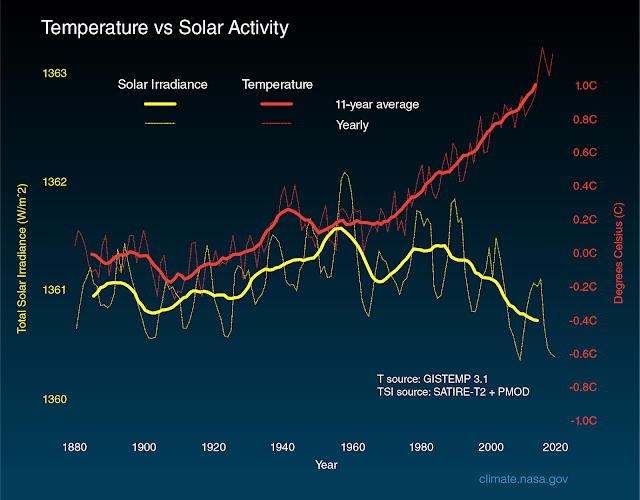Space weather refers to the effects of the Sun on Earth. These effects range from changes in radiation strength—insolation—which changes how much light and heat arrive at the earth’s surface. They also include particle surges from solar events like flares and sunspots, which arrive at the earth’s magnetosphere—the outer edge of the planet’s magnetic field—and can disrupt radio transmissions and electronics across the planet.
While solar flares can (and do) emit massive bursts of charged particles which interfere with power grids and communications, they are of little or no importance concerning climate change. Particle storms do not affect the heat budget of the planet.
Variations in the Sun’s output do, however. As shown in the illustration, the Sun has a roughly 11-year cycle of sunspot activity. Sunspots are patches, sometimes roughly the same diameter as Earth, of lower surface temperatures on the Sun (3480°C/6300°F) than the surrounding areas (5540°C/10,000°F). Increased sunspot activity means lower surface temperature, and lowered output. This means lower insolation on Earth, and less heat input to the climate system. The 11-year cycle is a regular feature of solar activity and is not a driver of climate change.
There have been historical changes in solar irradiance, identified by proxy data. Astrophysical models state that roughly 4 billion years ago the Sun was only 70% as luminescent as now, and it will continue to burn more brightly with time as it continues to consume its fuel, helium (He) and hydrogen (H). The time scale of this change is too great to impact current climate change, however.
Tomorrow: regional profiles 1: Australia.
Be brave, and be well.









No comments:
Post a Comment